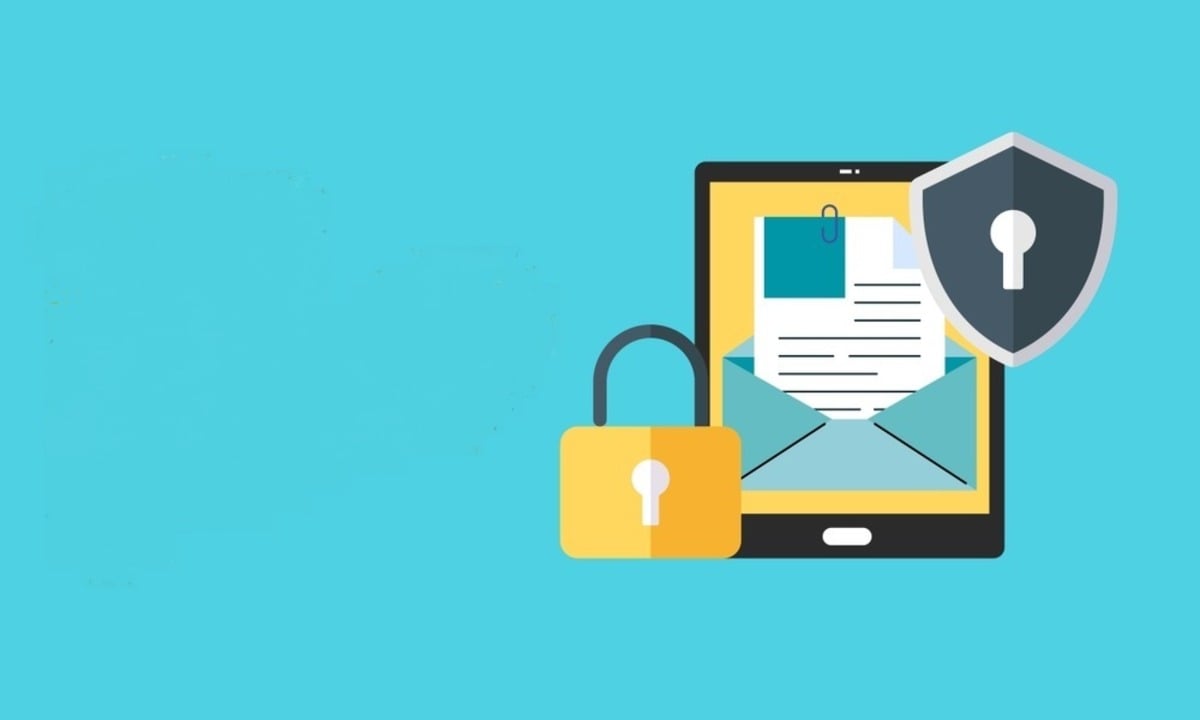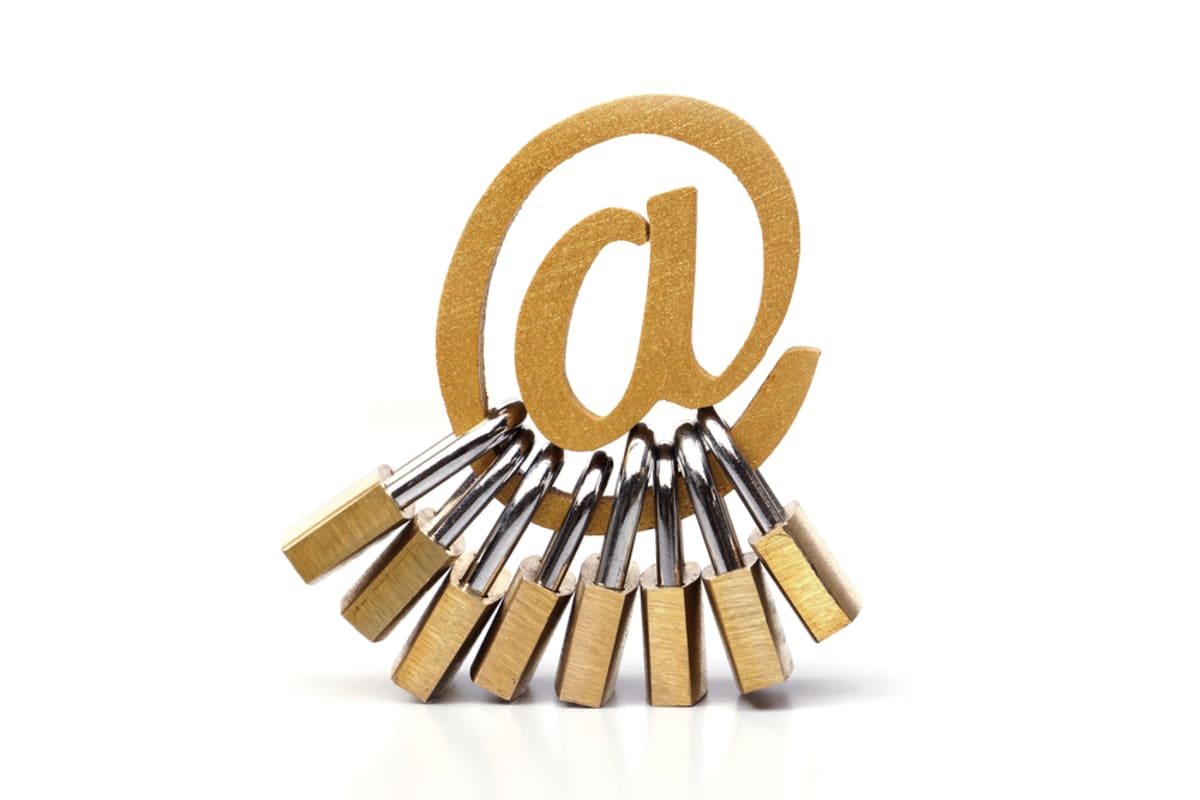
Securing Your Communication: A Step-by-Step Guide on How to Encrypt Email
Listen to the article
Securing Your Communication: A Step-by-Step Guide on How to Encrypt Email
Email encryption isn't just a fancy tech term; it's your first line of defense in protecting online communication. In today's digital age, where dangers in cyberspace hide behind every click, fortifying your email communications is of paramount importance.
However, how do you start? Our guide is here to demystify the process for folks with basic to intermediate knowledge.
You'll learn step-by-step how to encrypt email, tackle common hurdles, and adopt best practices for safer digital chats. Additionally, we'll dive into upcoming trends in email protection to ensure you're always one step ahead.
Let's make sure your messages stay private and secure together.
Understanding the Importance of Email Encryption
In today's world, email serves as a fundamental pillar for our everyday chats, particularly in the workplace. However, as much as it simplifies conversation, it also opens up new vulnerabilities. This is where email encryption steps into the spotlight.
Email encryption transforms your readable emails into scrambled code as they travel across the internet. Only the intended recipient, with the correct decryption key, can unscramble the message, rendering it unreadable to anyone who might intercept it. This is essential not just for guarding sensitive information against cybercriminals but also for ensuring compliance with privacy laws and regulations.
Whether you're discussing trade secrets, sending personal information, or just want peace of mind, encrypting your emails mitigates the risk of data breaches and identity theft. In essence, it's akin to sending a letter in a locked safe, rather than on a postcard.
 Step-by-Step Guide On How to Encrypt Email
Step-by-Step Guide On How to Encrypt Email
Email encryption is a crucial step in safeguarding your communication. It ensures that sensitive information remains confidential, only accessible by the sender and intended recipient. In this manual, we'll guide you step-by-step on how to secure your emails with encryption, designed especially for those starting out or at a mid-level understanding.
Choosing an Email Encryption Service
The first step in email encryption is selecting a reliable service. Many email providers offer built-in encryption features; however, third-party applications can offer additional security layers. Services like ProtonMail and Tutanota are renowned for their robust encryption methods. Familiarize yourself with the options and choose one that best fits your needs.
When deciding, weigh aspects like user-friendliness, how well it meshes with your existing email service, and if it aligns with industry-specific regulations.
Setting Up Your Encryption Tool
Once you've chosen an encryption service or tool, it's time to set it up. This typically involves installing software or configuring settings within your existing email platform. Follow the instructions provided by the service carefully—this might include generating a public-private key pair or enabling specific security protocols.
If using a service like ProtonMail, their support page offers comprehensive guides on getting started with encrypted emails.
Sending Encrypted Emails
Sending an encrypted message varies slightly from standard emailing practices but remains straightforward:
- Draft your message as usual in your chosen platform.
- Select the option to encrypt before sending (this may be automatically enabled depending on how you’ve configured settings).
- If prompted, enter a passphrase that both you and the recipient know (not always required).
This simple change ensures that anyone intercepting this digital correspondence won't decipher its contents without access to either end’s decryption keys or passphrases.
Troubleshooting Common Issues
- Facing difficulties when others try decrypting messages? Make sure they're using compatible tools/software.
- Cipher method mismatches: Sometimes issues arise because different services use varied encryption techniques—to ensure compatibility ahead of time.
- Encountering errors during setup? Revisit installation guides; small missteps can disrupt functionality.
It's important not just to know these steps but to understand why each matters—a testament from someone who has navigated these waters firsthand tells more than any theory could ever reveal.
Common Challenges and Solutions in Email Encryption
While the theoretical aspects of email encryption may seem straightforward, real-world implementation often presents a set of common challenges. In the following section, we'll explore typical issues users encounter and provide practical solutions to overcome these obstacles.
Complex Setup Processes
Email encryption is essential for secure communication, but setting it up can feel like solving a Rubik's cube blindfolded. Users often get lost in the technical jargon and complex steps required to start encrypting their emails.
To tackle this challenge, consider using email encryption tools that offer guided setup processes. By offering a roadmap of straightforward guidelines, these tools demystify the process for individuals possessing elementary to moderate expertise. ProtonMail stands out as an intuitive platform that demystifies the process of securing emails for its users.
Moreover, engaging in online forums or communities dedicated to cybersecurity can be invaluable. Here you can find advice from experts who have navigated these waters before and are willing to share their insights.
Key Management Headaches
Another common hurdle is managing encryption keys — think of them as the secret codes that lock and unlock your encrypted email messages. Losing these keys means losing access to your messages forever.
A solution lies in utilizing key management services that automate the storage and retrieval of these critical components. Take Keybase as an example; it simplifies the entire process of creating, swapping, storing, and canceling keys in a way that doesn't burden the user.
Besides automating key management tasks, Keybase also facilitates secure communications through encrypted messaging services further enhancing security measures while keeping usability at its core.
Incompatibility Between Different Systems
Email encryption often stumbles upon another roadblock: compatibility issues between different email systems or clients not supporting certain types of encrypted messages which leads to frustration on both sender’s and receiver’s ends.
The workaround? Use standards-based encryption methods like PGP (Pretty Good Privacy) or S/MIME (Secure/Multipurpose Internet Mail Extensions). These protocols are widely supported across various platforms ensuring smooth sailing when sending encrypted emails across different systems. OpenPGP, for example, provides tools compatible with numerous devices thus bridging gaps caused by system discrepancies.
Focusing on interoperability ensures everyone involved can securely receive read and decrypt messages regardless device they’re using. This is pivotal in maintaining seamless yet safe lines of communication within diverse tech landscapes.
 Best Practices for Secure Communication
Best Practices for Secure Communication
Once you've navigated the technicalities of encryption and overcome common challenges, it's crucial to embed consistent, diligent practices into your routine. This next segment covers best practices to ensure that each email you send adheres to the highest standards of security and privacy.
Use Strong, Unique Passphrases
When you encrypt messages, sometimes you'll use a passphrase that both the sender and recipient know. This passphrase works like an extra layer of protection, but its effectiveness hinges on your ability to create a strong and unpredictable series of characters.
Always aim for passphrases that blend upper and lower case letters, numbers, and symbols, and avoid common words or phrases that could be easily guessed. Additionally, each encrypted conversation should have its unique passphrase, preventing one compromised passphrase from unlocking all other communications.
Regularly Update Your Software
The email encryption tools you use are only as secure as their latest update. Developers routinely release patches and updates to protect against new vulnerabilities. Make sure to keep all your software—especially your encryption tools and email clients—up to date. This reduces the risk of someone exploiting a known flaw to crack your encrypted messages.
Conduct Regular Security Audits
Take time to periodically review your encryption practices and tools. This includes checking that you're following procedures correctly, verifying that your keys are secure and haven't been compromised, and updating passphrases. A thorough security audit might also involve examining the security of email attachments, as they represent another potential weak point in your communication security.
Train and Educate Team Members
If you're using email encryption within a team or organization, everyone must be on the same page. Training sessions can help team members understand the importance of encryption and how to use it effectively. Regular education on phishing threats and the consequences of security breaches can encourage team members to adopt and maintain secure practices.
Back-Up Your Encryption Keys
Losing access to your encryption keys means losing access to your encrypted emails. It's vital to have a secure backup of your keys. Some services offer a way to back up your keys within their systems, but it's wise to also keep an offline copy in a secure location. Ensure that any such backups are themselves encrypted and protected from unauthorized access.
Keep Your Private Keys Private
The strength of encryption lies in the secrecy of your private keys. Never share your private keys; they are the equivalent of the keys to your digital kingdom. If someone else gains access to them, they can read your encrypted messages. Ideally, private keys should be stored in a secure environment like a hardware security module.
Be Cautious with Cloud Services
Cloud services can be convenient for storing and syncing your encrypted messages across devices. However, you must choose a cloud provider that respects privacy and offers strong encryption. Look for services that offer end-to-end encryption, ensuring that your data can't be read by the service provider or any other unauthorized party.
Verify Recipient Identities
Before sending sensitive information, confirm the identity of your recipients. This is especially important in a professional setting where email addresses can be spoofed. Utilize digital signatures where possible, and consider additional verification methods such as a voice or video call to authenticate the person on the other end.
Future Trends in Email Security and Encryption
As the digital landscape continues to evolve, so do the tactics of cyber attackers, necessitating cutting-edge defenses in email security and encryption. The following section delves into the emerging trends and innovative technologies poised to redefine how we protect our digital correspondence.
Quantum Computing: A Double-Edged Sword
Email security is standing on the brink of a revolution, with quantum computing at its core. This emerging technology promises to drastically enhance our encryption capabilities but also poses significant risks. As IBM explains, quantum computers can solve complex problems much faster than current technologies.
Here's the catch. The same power that lets them protect data better could also be used to break traditional encryption methods quicker than we ever thought possible. Companies are now racing to develop quantum-resistant algorithms to keep ahead of potential threats.
As we move forward, the landscape of email safeguarding is poised for a swift transformation, gravitating towards advanced quantum-resistant encryption strategies to secure communications against increasingly potent decryption capabilities.
 The Rise of AI and Machine Learning in Threat Detection
The Rise of AI and Machine Learning in Threat Detection
The use of artificial intelligence (AI) and machine learning (ML) is not new, but their application within email security is set for exponential growth. In an era where digital dangers lurk at every corner, AI and machine learning emerge as vigilant guardians, honing their ability to sniff out phishing schemes, malware incursions, and intricate threats with unparalleled accuracy before they ever breach the sanctity of one's email sanctuary.
Forbes sheds light on the revolution AI brings to cybersecurity, enhancing system intelligence by analyzing countless instances of harmful behavior. This ability allows for real-time threat detection and response—a game-changer for businesses looking to safeguard their communications effectively.
We should expect future email platforms not just to filter spam more accurately but also predictively analyze patterns that indicate newer forms of cyberattacks—making preemptive strikes against threats before they manifest fully into breaches or losses.
Elevate Your Company Through Email Marketing
Email marketing is an inbound marketing strategy that involves sending commercial messages to a group of people via email. These messages typically include promotional content, such as special offers, product updates, event invitations, or newsletters, aimed at engaging recipients and driving specific actions, such as purchases or website visits.
Email marketing allows businesses to directly communicate with their audience, build relationships, facilitate leads, and ultimately, increase sales and brand loyalty. It's a versatile and cost-effective tool that offers precise targeting, customization, and performance tracking, making it an essential component of modern marketing strategies.
Allow Geekly Media to guide you in mastering email marketing strategies for your company. Our team can help with email lists, email creation, and email automation. Reach out to our team to learn more about effective inbound marketing strategies.


-1.png)

